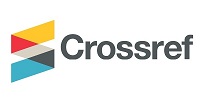Khmer Treebank Construction via Interactive Tree Visualization
Bonpagna Kann(1*), Thodsaporn Chay-intr(2), Hour Kaing(3), Thanaruk Theeramunkong(4)
(1) Institute of Technology of Cambodia
(2) Sirindhorn International Institute of Technology, Thammasat University
(3) Institute of Technology of Cambodia
(4) Sirindhorn International Institute of Technology, Thammasat University
(*) Corresponding Author
Abstract
Keywords
Full Text:
PDFReferences
M.P. Marcus, B. Santorini, and M.A. Marcinkiewicz, “Building a Large Annotated Corpus of English: The Penn Treebank,” Comput. Linguist., Vol. 19, No. 2, pp. 313–330, 1993.
H. Riza, M. Purwoadi, T. Uliniansyah, and B. Pengkajian, “Introduction of the Asian Language Treebank,” Proceedings of The Oriental Chapter of International Committee for Coordination and Standardization of Speech Databases and Assessment Technique (O-COCOSDA), 2016, pp. 26–28.
C. Nou and W. Kameyama, “A Rule-Based Proper Noun Recognition for Khmer Part-of-Speech Tagger,” The 69th National Convention of IPSJ, 2007, pp. 2–385-586.
O. Boonyarith, “Derivatives in Khmer Compound Words,” Mon-Khmer Stud. 38 A J. Southeast Asian Lang. Cult. Spec. Vol. Dedic. to Dr. David Thomas, 2009, pp. 173–183.
S. Prasomsuk and P. Mol, “Thai to Khmer Rule-Based Machine Translation using Reordering Word to Phrase,” International Journal of Computer Theory and Engineering, Vol. 9, No. 3, pp. 223-228, 2017.
V. Chea, Y.K. Thu, C. Ding, M. Utiyama, A. Finch, and E. Sumita, “Khmer Word Segmentation Using Conditional Random Fields,” Khmer Natural Language Processing, 2015, pp. 1-8.
IDRC, “Khmer Part-of-Speech Tagger,” PAN Localization Cambodia (PLC) of IDRC, Project Report, pp. 1-10, 2008.
C. Nou and W. Kameyama, “Khmer POS Tagger: A Transformation-Based Approach with Hybrid Unknown Word Handling,” ICSC 2007 Int. Conf. Semant. Comput., 2007, pp. 482–489.
T. Chay-intr and T. Theeramunkong, “Towards Thai Treebank Construction and Grammar Derivation,” Proc. Jt. Int. Symp. Artif. Intell. Nat. Lang. Process. (iSAI-NLP 2017), 2017, pp. 133-141.
N. Bi and N. Taing. “Khmer Word Segmentation Based on Bi-directional Maximal Matching for Plaintext and Microsoft Word Document,” 2014 Asia-Pacific Signal Inf. Process. Assoc. Annu. Summit Conf. APSIPA 2014, 2014, pp. 1-9.
C. Nou and W. Kameyama, “Hybrid Approach for Khmer Unknown Word POS Guessing,” 2007 IEEE International Conference on Information Reuse and Integration, IEEE IRI-2007, 2007, pp. 215–220.
G. Eryiğit, “ITU Treebank Annotation Tool,” Proceedings of the Linguistic Annotation Workshop (LAW '07), 2007, pp. 117-120.
P. Stenetorp, S. Pyysalo, G. Topi, T. Ohta, S. Ananiadou, and J. Tsujii, “BRAT : A Web-based Tool for NLP-Assisted Text Annotation,” EACL ’12 Proceedings of the Demonstrations at the 13th Conference of the European Chapter of the Association for Computational Linguistics, 2012, pp. 102–107.
C. Brabrand, R. Giegerich, and A. Møller, “Analyzing Ambiguity of Context-free Grammars,” Sci. Comput. Program., Vol. 75, No. 3, pp. 176–191, 2010.
T.H. Chen, C.-H. Tseng, and C.-P. Chen, “Automatic Learning of Context-Free Grammar,” Proc. 18th Conf. Comput. Linguist. Speech Process., 2006, pp.53–62.
Chandni, R. Narula, and S.K. Sharma, “Identification and Separation of Simple, Compound and Complex Sentences in Punjabi Language,” International Journal of Computer Applications & Information Technology, Vol. 6, No. 2, pp. 123–128, 2014.
C. Chhorn, Khmer Grammar for Students in General, Phnom Penh, Cambodia, 2002, pp.10-12.
Article Metrics
Refbacks
- There are currently no refbacks.
Copyright (c) 2019 IJITEE (International Journal of Information Technology and Electrical Engineering)

This work is licensed under a Creative Commons Attribution-NonCommercial-NoDerivatives 4.0 International License.
ISSN : 2550-0554 (online)
Contact :
Department of Electrical engineering and Information Technology, Faculty of Engineering
Universitas Gadjah Mada
Jl. Grafika No 2 Kampus UGM Yogyakarta
+62 (274) 552305
Email : ijitee.ft@ugm.ac.id
----------------------------------------------------------------------------






